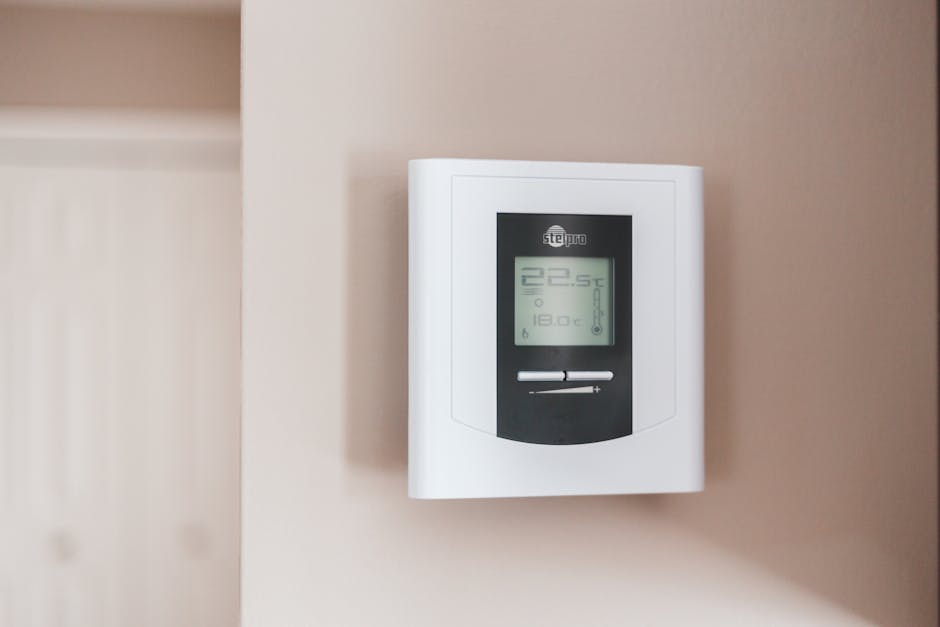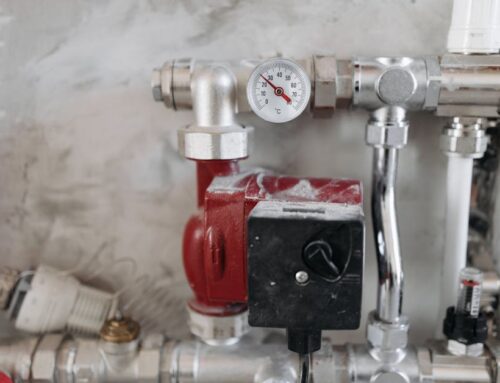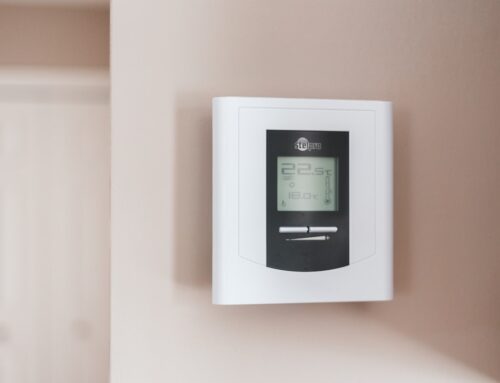
Smart thermostat energy savings can significantly reduce your home’s energy costs and improve comfort. If you’re considering upgrading your thermostat and you’re curious about the potential benefits, here are some highlights:
- Reduce energy waste: By learning your schedule and adjusting the temperature automatically, smart thermostats help cut down on energy consumption.
- Remote control convenience: Make temperature changes from anywhere using your smartphone, ensuring efficiency even when you’re not home.
- Detailed energy reports: Find when and how you’re using energy, helping you make informed decisions and optimize settings for maximum savings.
Where sustainability and cost savings are key priorities, the role of smart technology in energy management cannot be overstated. Smart thermostats represent a perfect blend of innovation and practicality, providing an intuitive way to manage heating and cooling systems efficiently. They harness technology to bring about tangible benefits, from lowering energy consumption to cutting costs.
As facility managers like Frank in Florida can attest, high energy bills and HVAC breakdowns are constant concerns. With smart thermostats, managing these issues becomes simpler, offering potential savings while maintaining a comfortable environment. Whether controlling the temperature while on the go, or analyzing energy usage patterns, smart thermostats empower property managers to optimize building operations seamlessly.
Key smart thermostat energy savings vocabulary:
– smart thermostat for commercial use
– smart thermostat installation cost
Understanding Smart Thermostats
Smart thermostats are revolutionizing home temperature control with advanced features like Wi-Fi connectivity, machine learning, and remote control. These devices are pivotal for enhancing energy efficiency and convenience.
Wi-Fi Connectivity
By connecting to your home’s internet network via Wi-Fi, smart thermostats allow you to manage your heating and cooling settings from anywhere using a smartphone app. This capability ensures your home maintains optimal comfort levels while also helping to save on energy costs.
Machine Learning
Smart thermostats use machine learning to adapt to your temperature preferences and schedule, making automatic adjustments over time. This intelligent feature eliminates the need for manual setting changes, optimizing energy usage based on your lifestyle.
Remote Control
The convenience of remote control lets you adjust your home’s temperature from any location. Whether you’re at work or on vacation, you can ensure your home is energy-efficient by making quick adjustments via your smartphone.
Smart thermostats offer a seamless and efficient way to manage your home’s climate, significantly reducing energy consumption and enhancing overall comfort.
Smart Thermostat Energy Savings
Smart thermostats are transforming energy management in homes, providing significant cost reduction and efficiency improvements. These devices equip homeowners with advanced tools to control and understand their energy usage, leading to considerable savings.
Energy Consumption
With detailed energy usage reports, smart thermostats help homeowners identify consumption patterns and peak usage times. This information allows for strategic adjustments, such as pre-cooling homes during cheaper energy rate hours, to reduce costs.
Cost Reduction
Smart thermostats can significantly lower heating and cooling expenses, which typically make up nearly half of an average American household’s energy bill. By optimizing temperature settings and minimizing energy waste, these devices can save homeowners about 10–15 percent annually on their bills.
Efficiency
Equipped with features like adaptive learning and remote monitoring, smart thermostats automatically adjust to your daily routines, ensuring energy is used only when necessary. This not only reduces manual adjustments but also helps in cutting down on energy waste, making your home more energy-efficient even when your schedule changes unexpectedly.
Key Features of Smart Thermostats
Smart thermostats come packed with features that make them a powerful tool for managing your home’s energy use efficiently. Let’s explore some of the standout features that can help you save on energy bills.
Precision Control
Smart thermostats offer precision temperature control that traditional thermostats simply can’t match. They maintain a consistent temperature by learning your patterns and adjusting heating and cooling cycles accordingly.
Imagine you prefer cooler temperatures at night. A smart thermostat will learn this habit and automatically lower the temperature during those hours, preventing energy waste and ensuring comfort. This precision avoids the common issue of temperature overshooting, which often leads to unnecessary energy use.
Personalized Scheduling
With personalized scheduling, you can set specific temperature preferences based on your daily routine. This means your HVAC system works efficiently when you’re home and conserves energy when you’re not.
For instance, if your household is empty during the day, the thermostat can be programmed to reduce heating or cooling, then adjust to a comfortable temperature just before you return. This feature is flexible and can be easily modified through an app if your schedule changes unexpectedly.
Geofencing
Geofencing technology takes smart thermostats a step further by using your smartphone’s GPS to determine your location relative to your home. When you’re within a certain distance, the thermostat prepares your home for your arrival by adjusting to your preferred temperature.
Conversely, when you leave the geofenced area, the thermostat shifts to an energy-saving mode. This automation is particularly useful for those with varying schedules, ensuring energy is used only when needed.
Energy Reports
Smart thermostats provide detailed energy reports, offering insights into your usage patterns. These reports can highlight peak energy usage times and suggest adjustments to save on costs.
For example, if your reports show high energy use in the afternoon, you might opt to adjust your settings or take advantage of lower energy rates at other times. This data-driven approach empowers you to make informed decisions about your energy consumption.
By leveraging these features, smart thermostats not only improve comfort but also contribute to significant energy savings. They are a savvy investment for anyone looking to reduce utility bills and promote sustainable living.
Next, we’ll explore how to maximize these savings with smart thermostat technologies.
Maximizing Savings with Smart Thermostats
Smart thermostats are more than just digital temperature controllers. They are intelligent devices designed to maximize energy savings through adaptive learning, integration with other smart home devices, and remote monitoring.
Adaptive Learning
One of the standout features of smart thermostats is their ability to learn and adapt to your lifestyle. By observing your daily routines and preferences, these devices automatically adjust temperature settings to optimize efficiency.
For instance, if you tend to lower the heat when you go to bed, the thermostat will learn this pattern and begin adjusting the temperature without any manual input. Over time, this adaptive learning can lead to substantial cost reductions on your energy bills.
Integration with Smart Home Devices
Smart thermostats can seamlessly integrate with other smart home devices, creating a unified and energy-efficient ecosystem. Imagine your thermostat working in tandem with smart blinds to regulate indoor temperatures by blocking out sunlight during hot days. Or, envision adjusting your home’s temperature using voice commands through a voice-activated assistant like Amazon Alexa.
This level of integration not only adds convenience but also improves the overall energy efficiency of your home. By coordinating with other devices, smart thermostats ensure that energy is used judiciously, contributing to both comfort and savings.
Remote Monitoring
Remote monitoring is another powerful feature of smart thermostats. With an internet connection, you can control your home’s temperature settings from anywhere. This is particularly useful if you forget to adjust the thermostat before leaving for vacation or if your plans change unexpectedly.
By remotely managing your thermostat, you can prevent unnecessary energy consumption and ensure a comfortable environment upon your return. This feature is especially beneficial for vacation homes, where energy savings can be maximized by adjusting settings when the property is unoccupied.
By leveraging these advanced features, smart thermostats offer a robust solution for those looking to improve their home’s energy efficiency and reduce utility expenses. Next, we’ll address some common questions about smart thermostat energy savings to help you make informed decisions about integrating this technology into your home.
Frequently Asked Questions about Smart Thermostat Energy Savings
Do smart thermostats save energy?
Absolutely. Smart thermostats are designed to optimize energy use in your home. They achieve this by learning your habits and adjusting the temperature accordingly. According to the Environmental Protection Agency (EPA), smart thermostats can reduce heating and cooling costs by an average of 8%, saving homeowners approximately $50 annually. These savings are based on real-world data collected from a variety of homes, ensuring that the energy savings claims are backed by field data.
Is there a downside to smart thermostats?
While smart thermostats offer many benefits, there are a few potential downsides to consider. First, the initial cost can be higher than traditional thermostats. However, the long-term savings on energy bills can offset this initial investment. Compatibility is another consideration; not all HVAC systems may be compatible with all smart thermostats, so it’s important to check before purchasing. Lastly, some users may find the technology challenging to steer, especially if they’re not comfortable with tech. However, many smart thermostats are designed to be user-friendly, with intuitive apps and interfaces.
How much energy does 1 degree on a thermostat save?
Adjusting your thermostat by just 1 degree can lead to noticeable energy savings. The exact savings depend on your climate and HVAC system efficiency. In general, reducing your thermostat setting by 1 degree can save about 1% to 3% on your energy costs. This small change can accumulate to significant savings over time, especially in regions with extreme temperatures where heating and cooling are used extensively.
By understanding these aspects, you can make informed decisions about whether a smart thermostat is right for your home and how it can contribute to energy efficiency and cost savings.
Conclusion
Where sustainable living is more important than ever, smart thermostats offer a practical solution for effective energy management. At First Mechanical, we understand the significance of reducing energy consumption, not just for cost savings but also for environmental stewardship. Our comprehensive HVAC services, including the installation of smart thermostats, are designed to help you achieve these goals.
Smart thermostats are more than just a gadget; they are a gateway to smarter energy use. With features like adaptive learning and remote monitoring, these devices ensure your HVAC system runs efficiently, reducing waste and lowering your energy bills. By integrating smart thermostats into your commercial or residential spaces, you can take a proactive step toward sustainable energy use.
Our team at First Mechanical is committed to helping you harness the full potential of smart thermostats. Whether you’re in Tampa, Melbourne, or anywhere in Florida, we’re here to provide fast, reliable service custom to your needs. We believe that by embracing smart technology, you can contribute to a greener, more sustainable future.
For more information on how smart thermostats can improve control of your commercial air conditioning systems, visit our Smart Thermostats and Automation page. Let’s work together to make smarter, more sustainable energy choices.












